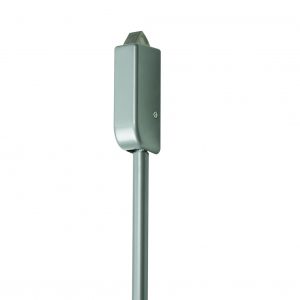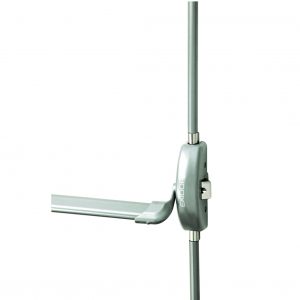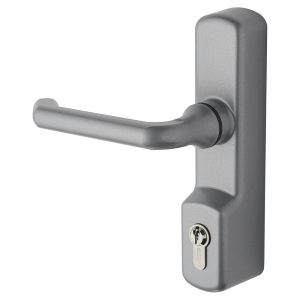 Here, Roland Etheridge, Category Manager at IronmongeryDirect outlines what is available when it comes to escape door hardware, what to look for when selecting products and how to ensure security.
Here, Roland Etheridge, Category Manager at IronmongeryDirect outlines what is available when it comes to escape door hardware, what to look for when selecting products and how to ensure security.
Ensuring that occupants of a building can evacuate quickly and easily in the event of a fire is critical, and escape door hardware is a central part of achieving this.
The first step is to ensure the right type of emergency exit hardware is chosen, depending on how the building is used. For any public building, including schools, hospitals, airports and retail and leisure facilities, the escape door hardware must be designed for use by those who are unfamiliar with the building. Products suitable for these environments will be tested and comply with BS EN 1125:2008.
In contrast, in non-public, low occupancy buildings where occupants can be instructed on the use of the fire doors and undertake regular fire drill practices, a different standard applies. This category of building includes smaller offices and workplaces occupied by a maximum of 60 people. Here, escape hardware should comply with BS EN 179:2008.
Hardware options for public places
There are broadly two types of emergency exit hardware that conform to BS EN 1125; push bars and touch bars, both of which must be CE or UKCA marked and the cover at least 60% of the leaf width when installed.
 A push bar, also called a panic bar, consists of a hinged bar that is pressed towards the door to release the latch and open the door. IronmongeryDirect has a range of options for single and double doors such as the Arrone AR882 Single Door Panic Latch and the Briton 377 E Rebated Double Door Panic Bar Set. Both are designed for simple installation and are suitable for timber doors. Where enhanced security is required, there are also options such as the Exidor 513B-B/AD for single timber, aluminium and uPVC doors, which features three-point locking and anti-thrust protection.
A push bar, also called a panic bar, consists of a hinged bar that is pressed towards the door to release the latch and open the door. IronmongeryDirect has a range of options for single and double doors such as the Arrone AR882 Single Door Panic Latch and the Briton 377 E Rebated Double Door Panic Bar Set. Both are designed for simple installation and are suitable for timber doors. Where enhanced security is required, there are also options such as the Exidor 513B-B/AD for single timber, aluminium and uPVC doors, which features three-point locking and anti-thrust protection.
Alternatively, touch bars may be preferred in some public buildings. These are fitted in the same way as a push bar but consist of a bar section that is depressed to open the door. With no swinging handle, it eliminates the chance of anything being trapped behind the bar when operated. Also, as it integrates closer to the door surface it is often considered more visually appealing as well as more suitable for applications such as sports halls where any protruding hardware may present a risk of injury. The Briton 571 Single Door Touchbar Panic Latch offers a modular solution with one point locking as standard with the option for additional locking elements if required. The design of the bar also provides a grip that allows the door to be easily pulled closed.
Hardware suitable for non-public buildings
For these applications, one of the most common options is a push pad that complies with BS EN 179:2008. While still simple and easy to operate, the push handle surface can be much smaller. For example, the Arrone AR883 Single Door Push Pad Latch, which is reversible and suitable for any door width, provides a simple, single point locking device.
It is also possible to fit a BS EN 179:2008 complaint lever handle that is quick and easy to operate. In addition, where doors on escape routes need to be locked when not occupied, there are products such as the Eurospec Easi-T Escape Nightlatch Kit. This includes handles that comply with BS EN 179:2008 and the BS 8300 standard for accessibility as well as a euro profile cylinder lock. When the inside handle is operated, both the latch and deadbolt are disengaged to allow easy evacuation.
 Access from outside
Access from outside
Where external access is needed via a door on an escape route, outside access devices provide the option for a handle and lock on the exterior, while the door can still be opened inside using push bars or push pads if required. For example, the Exidor 325EC lever, which is BS8300 certified, features a euro profile cylinder lock to secure the door from the outside and is compatible with mortice actuator push bars and push pads. When locked, the lever is disengaged from the mechanism and still moves, therefore preventing unauthorised entry and damage to the lock itself.
